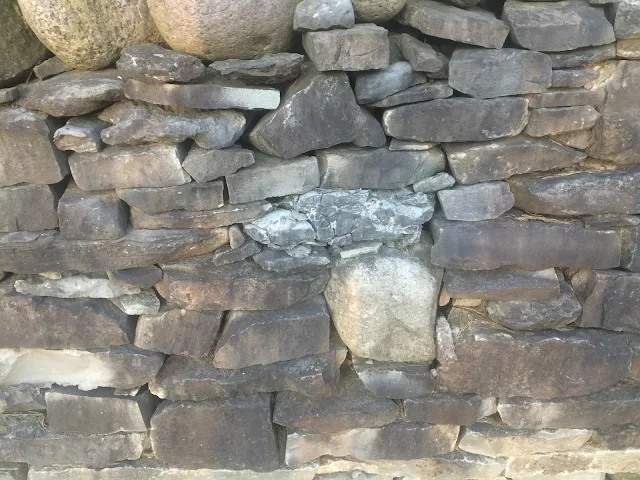Spalling is the chipping or fragmenting of a stone usually due to freezing and thawing. Moisture in a porous or stratified stone (especially limestone) can cause the outer surface to peel off or crack when it freezes.
It's sometimes very hard to determine if a particular stone might perhaps begin to spall. It can look perfectly good and yet within a year after putting in a wall it can start look like this. Some spalling takes place over several years.
One important thing to avoid spalling stones is to make sure they are not laid face bedded. Also stones that are most likely to spall often have a tiny network of hairline cracks visible on the surface and these when tapped with a hammer sound with a thud rather than a ring or a solid resonance.
This spalled stone (photo above) showed up six years after the wall was built. I plan to replace the damaged stone this spring. If there are only one or two spalled stones in a wall they are usually not too hard (excuse the pun) to replace.
